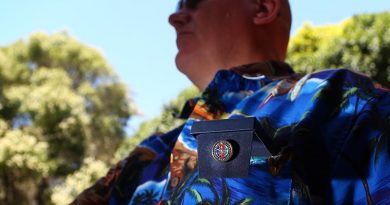Are Tanks Obsolete?

A video is circulating, the proposition of which is that the tank is dead. Drones and anti-tank missiles, coupled with artillery, have spelt the end for it on the battlefield. The tank casualties resulting from the war in Ukraine, is claimed to be proof of this.
Is this why the Chief of Army has stripped 1st Armoured Regiment of its tanks and made it a non-combatant?
Further to this, 3 Brigade in Townsville, supposedly an armoured brigade, is missing a tank squadron (as well as a battlegroup headquarters and a cavalry squadron). This is at a time which Professor Blainey has described as “probably the world’s most perilous since the end of the Cold War in 1990”.
The CA’s response to declining strategic circumstances, seems an odd one. Why reduce the combat power of the nation’s foremost offensive capability? Cutting back one third of 3 Brigade’s tank and reconnaissance strength is a significant loss. So too, is the lack of flexibility and control imposed by the missing battlegroup headquarters.
Has the CA decided that the tank really is dead and it is necessary to progressively reduce the number of tanks in the order of battle. Maybe he sees this applying to armoured fighting vehicles in general and his next step will be to scrap a company of mechanised infantry combat vehicles (MICVs) from 3RAR.
Or is there something else at play here? Has it been decided that the proposed armoured brigade is not affordable and there is a need to cut back on the number of tanks, reconnaissance vehicles and MICVs; in order to save money in the Defence budget?
It had been thought that 1 Armd Regt was being held back from Townsville temporarily because of the lack of housing there. The CA was asked if this was the case, but has declined to either confirm or deny. If the proposition that the tank is dead is true in the CA’s viewpoint, what will take its place?
The answer has to start with the role that the tank fulfils on the battlefield. Is it possible that future wars will not involve infantry? There will be all sorts of autonomous machines, but will any be able to take the place of a soldier? The answer is certainly ‘no’ in the timeframe under consideration. It follows that there will be a need to provide direct fire support, aka the tank capability, as part of a combined arms force underpinning land operations. The fact that the future ‘tank’ will not be anything like the present Abrams M1A2 SEPv3, is without dispute.
What does such a direct fire support capability need to provide? The answer is, as it has ‘always’ been: lethality, survivability, and mobility, under all extremes of climate and terrain. This is self-evident. What is unknown is the way in which advances in technology will influence the solution. Direct fire support can be provided by a manned vehicle, a robotic vehicle, or an optionally manned vehicle. The US Army is considering the last concept (one imagines, it is too soon to bank everything on robotics alone).
A quandary exists. How does one provide a direct fire support capability without a tank? Maybe the CA has already resolved the issue and autonomous infantry are in the pipeline. Hopefully there’s a back-up plan.
Lieutenant Colonel Bruce Cameron, MC, RAAC (Ret’d)
FILE PHOTO: An Australian M1A2 SEP v3 main battle tank at Puckapunyal Military Area, Victoria. Photo by Corporal Michael Currie.
.
.

.
.





